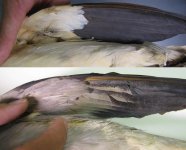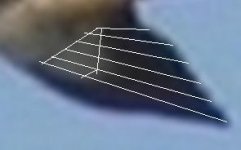Rasmus Boegh
BF member
Any chance of a link anyone to the captive Silvery photos? The Yahoo group thread which holds the original message regarding these lacks attachments as far as I can see (maybe because I'm not a group member?)
Just interested to see some good pictures of this enigmatic species.
Yahoo groups don't save attachments. The photos are far from perfect (as noted earlier, I often get the feeling that the photos by Crimson Lam are screen-caps from videos). One of them is here:
http://www.internationaldovesociety.com/SeedSpecies/SilveryWoodPigeon.htm
The photo is rather dark, and I suspect the non-black sections of the plumage were lighter than they appear (to quote Crimson Lam in the earlier Yahoo message: "pale-grey white"). As the photo size is modified on the above page, a direct link to the photo shows the original size without the small distortion:
http://www.internationaldovesociety.com/Seedeaterspics/Asia/Misc Asia/silvery.jpg
If needed (PM me), I can forward the 2nd photo showing a single bird more or less head-on (it appears whiter than the previous, but is perched in direct light), but if anything it is of a lower quality than the above. I don't know of a link with it that is accessible to all.
As a brief final note the photo on the above link has also been used on various Czech and Russian sites, and it appears some have been mislead to thinking it originated there (e.g. http://www.ornithomedia.com/magazine/mag_art210_2.htm). These sites have been around for years, but fortunately appear to be on the fall. Basically, if you have photographed a "high profile" bird where very few photos are around there's a fair chance one of these Czech or Russian sites at some point have used it (they typically appear to be some type of illustrated bird lists). They seem to have little regard for copyrights, and being in Czech or Russian most people in Western Europe/North America wouldn't even know how to contact the people running them. Consequently, unless actually starting a big case with an international lawyer and all, most have no real chance of having their photo removed from one of these pages.
Last edited:







